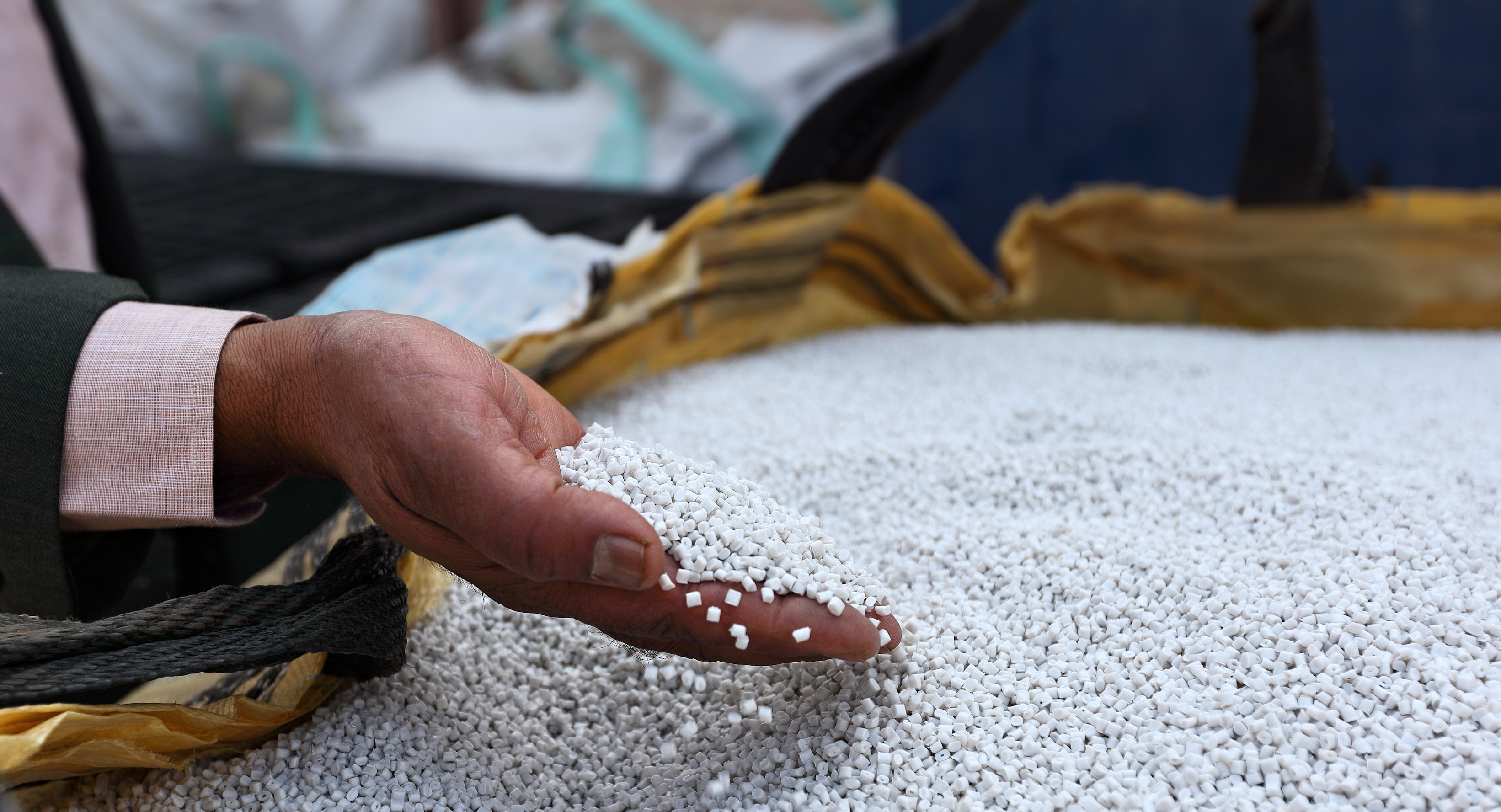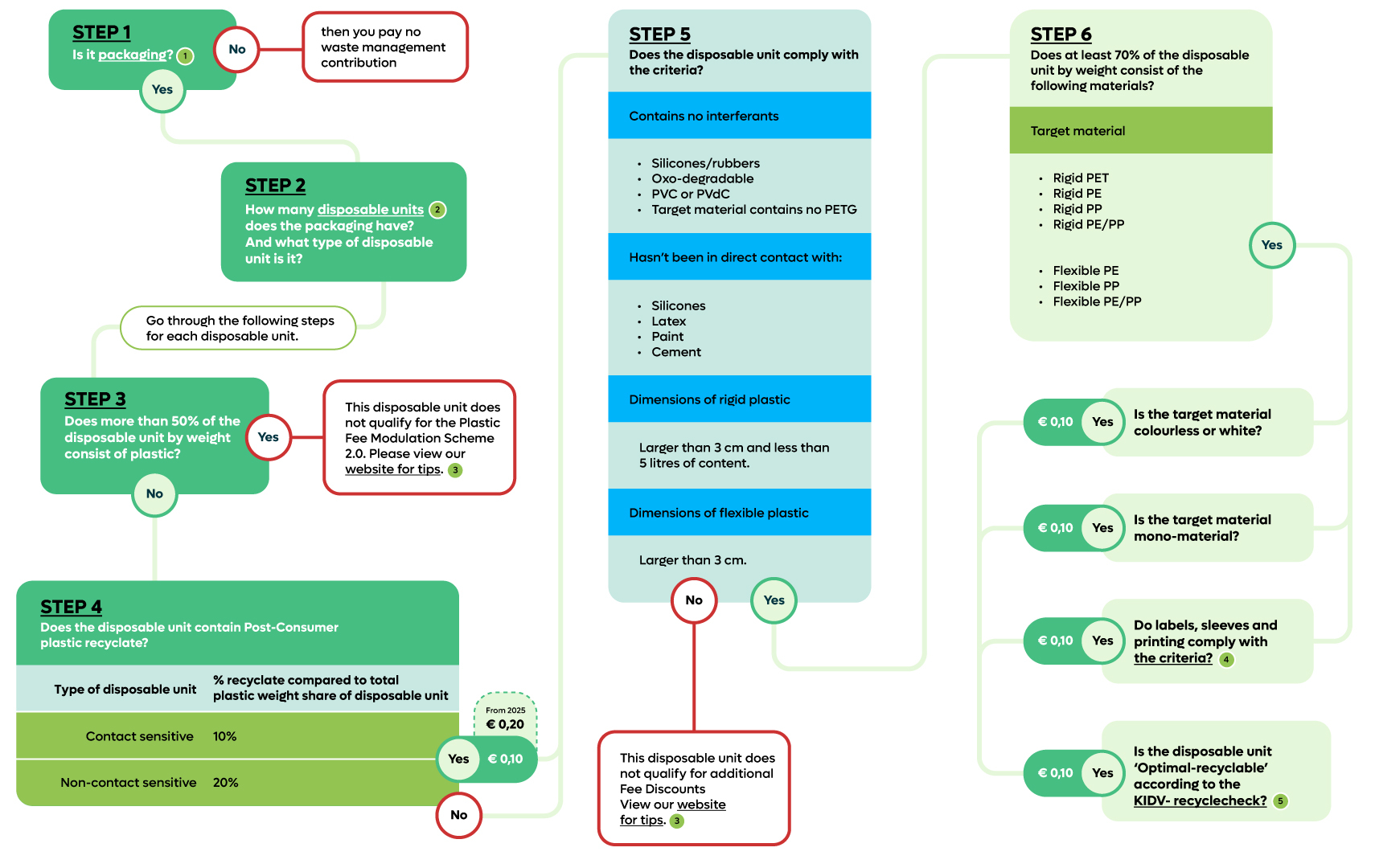Fee Modulation Plastic 2.0
Verpact introduces Fee Modulation Plastic 2.0. The incentive towards a sustainable future.

What is Fee Modulation Plastic 2.0?
In order to close the plastic packaging chain and produce as little new plastic as possible, plastic packaging that is thrown away must be used again as raw material for new plastic packaging. From plastic packaging, to plastic packaging. The easier a packaging is to recycle, the better this process goes. Verpact will therefore reward highly recyclable plastic packaging and the use of recycled content.
Plastic has good qualities, such as preserving products for a longer period. However, if these packaging are not disposed of properly or are not recycled effectively, it has a negative impact on both people and the environment. In The Plastic Guide, Verpact provides direction. Among other things, we have set the goal that by 2050 all products will be packaged completely fossil-free and circular. Fee Modulation encourages producers and importers to make this change with us.
Explanation Video
What is ‘packaging’?
All products, made from any type of material, that can be used to contain, protect, handle, deliver, and present goods—from raw materials to finished products—throughout the entire supply chain, from producer to user or consumer. This also includes disposable items used for this purpose.
Packaging exclusively includes:
- Sales or primary packaging: Packaging designed to form a single sales unit for the end user or consumer at the point of sale.
- Grouped or secondary packaging: Packaging designed to group multiple sales units at the point of sale, whether sold as such to the end user or consumer or solely intended to restock store shelves. This type of packaging can be removed from the product without affecting its characteristics.
- Transport or tertiary packaging: Packaging designed to facilitate the handling and transportation of multiple sales units or grouped packages, preventing physical damage during loading or transport. Containers used for road, rail, sea, and air transport are not considered transport packaging.
(Policy Chapter 3, Source: Packaging Decree, Article 1, Paragraph 1, Sub a to d: Definition of Packaging)
What is a ‘disposal unit’?
Packaging is not always discarded as a whole. Often, packaging consists of multiple components, possibly made from different materials, which are disposed of by the user at different times. In such cases, there are multiple disposal units. This impacts the recyclability of the packaging.
To assess recyclability, the KIDV Recycle Checks use a classification based on disposal units. Whether different components or materials go through the sorting and recycling process together or are processed separately can make a significant difference in the recyclability assessment.
In practice, it is common for some disposal units of a complete package to be highly recyclable, while others are only moderately or minimally recyclable.
Important update: The discount for using recycled material has been increased from 10 cents to 20 cents per kilogram for 2025. With this, Verpact further encourages producers and importers of plastic packaging to introduce highly recyclable plastic packaging to the market.
The model
We make a distinction between rigid packaging or flexible packaging. They both have their own starting rate.
Next, we would like to know what type of packaging it is and what type of plastic it is made of.
What sets Fee Modulation Plastic 2.0 apart from the previous system (2019-2023), is the fact that benefits can already be achieved with small steps.

- Packaging
- Disposal unit
- Check out this website for tips
- The conditions
- KIDV Recycle Check
When will I be rewarded with a 10 cents discount?
- If your packaging is transparent or white and/or;
- If your packaging consists of a mono-material and/or;
- If the labels on your packaging meet the criteria and/or;
- If your packaging passes the KIDV Recycle Check and/or;
- If you meet the requirements for using recycled content.
In total, your discount can add up to 50 cents per kilogram.
We offer tailor-made solutions for innovations, as improvements in the plastic chain are always welcome.
Packaging Administration
In order to be able to apply for Fee Modulation Plastic 2.0, we need information about your packaging. It is therefore important that you organize your packaging administration accordingly.
Break down your packaging by material type:
- If the plastic part of the packaging consists of multiple disposable units, the disposable units will be assessed individually. Read more about disposable units. Note! Determine the type of packaging for each disposable unit. It may happen that different parts of your packaging are made of different packaging types*.
- Record all material types of a packaging or the disposable unit (rigid plastic/flexible/unspecified plastic/paper and cardboard/aluminium/other metals/galss/other material types) separately per kilogram in your administration. For SUP packaging, provide the quantity in addition to the kilograms.
Note! For plastic, you should distinguish between rigid and flexible parts separately. It may help to distinguish your disposable unit into:
- Main component (this is the basis for assessment for fee modulation)
- label (to assess whether the label meets the conditions for fee modulation)
- other components
For SUP packaging, you should also provide the number of pieces in addition to the kilograms.
- The plastic components of your packaging might qualify for Fee Modulation Plastic 2.0.
* Example
A meal salad (usually a PET tray) often contains plastic bags with additonal contents or dressing. These are separate disposable units and are therefore recorded separately from the tray and assessed for Fee Modulation.
- The PET tray (including the cover film) is a food packaging with rigid elements, SUP. Note that this has both a rigid and a flexible part.
- The plastic bags fall under the category of bags and wrappers, SUP.
In any case, you need to ensure that your administration includes the items shown in the illustration below.
Intensive measures are being taken both in Europe and in the Netherlands to reduce plastic packaging and to make them more recyclable. Fee Modulation is in line with this upcoming legislation and anticipates a sustainable change in the entire chain.